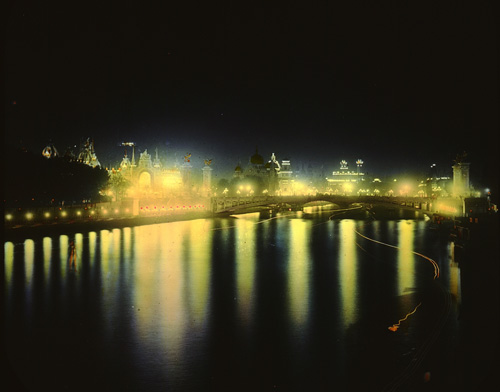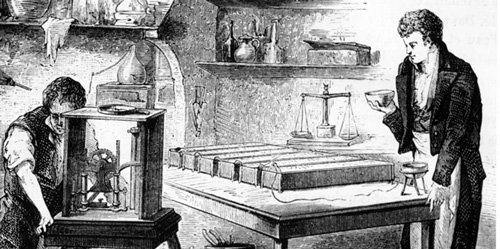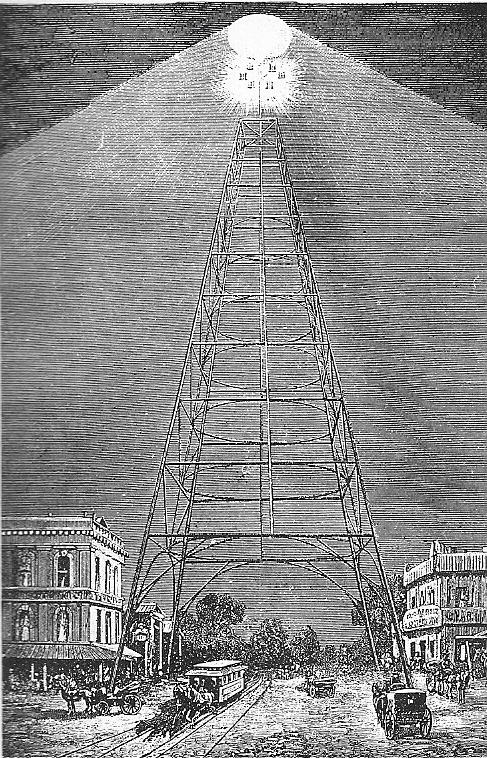Saturday, March 02, 2013
Friday, March 01, 2013
The shady origins of five popular board games
The shady origins of five popular board games:
An enlightening look at the backstory of Monopoly, Clue, and other game night favorites.
More



An enlightening look at the backstory of Monopoly, Clue, and other game night favorites.
More
NASA's discovery of third radiation belt around Earth will mean 'rewriting textbooks'
NASA's discovery of third radiation belt around Earth will mean 'rewriting textbooks': 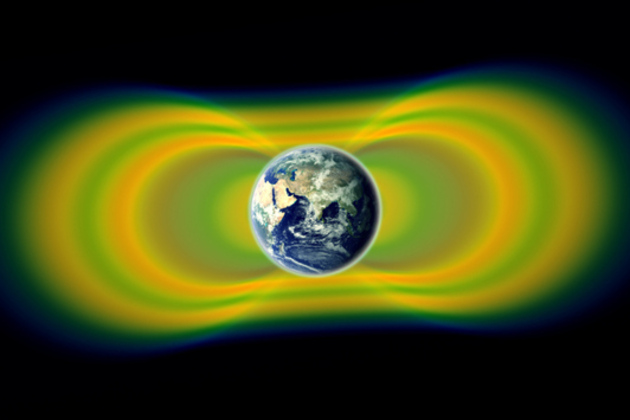
Scientists used to think that the Van Allen belts — two nested rings of charged particles surrounding the Earth — bulge and swell in response to what’s happening on the sun, but are otherwise more or less fixed in place. Well, according to a new finding announced by NASA, the rings are actually much more malleable than originally thought. New data shows their structure reconfigured in response to a major coronal mass ejection (pictured below), for the first time revealing the formation of a third belt. In its press release, NASA said the discovery would require "rewriting textbooks."
Continue reading…

Scientists used to think that the Van Allen belts — two nested rings of charged particles surrounding the Earth — bulge and swell in response to what’s happening on the sun, but are otherwise more or less fixed in place. Well, according to a new finding announced by NASA, the rings are actually much more malleable than originally thought. New data shows their structure reconfigured in response to a major coronal mass ejection (pictured below), for the first time revealing the formation of a third belt. In its press release, NASA said the discovery would require "rewriting textbooks."
Continue reading…
Thursday, February 28, 2013
Australian Ad Suggests Eating Bread That Walks Around Outdoors on Its Own
Australian Ad Suggests Eating Bread That Walks Around Outdoors on Its Own: 
If you eat Abbott's Village Bakery bread, don't be surprised if it bleats a little, or feels a little woolly, on the way down. That's because Abbott's Village Bakery loaves are essentially free-range animals who roam the Australian countryside—judging by this amusing spot from ad agency BMF. "It may seem a little strange to some, but for us free range is the only way to raise bread," the company says on its Facebook page. "We like to shower our loaves with love, let them roam free and grow up in their own unique little way. It's what makes every loaf special." No idea what that really means, but hey, it makes for a kooky commercial. Credits below.
CREDITS
Client: Abbott's Village Bakery
Agency: BMF, Australia
Director: Christopher Riggert
Creative Director: Justin Ruben
Art Director: Alex Booker
Copywriter: Philip Sicklinger
Producer: Michael Hilliard
Digital Creative: Tim Hill
Executive Producer: Rob Galluzzo
Visual Effects: Colin Renshaw
Graphic Designer: Phil Banks
Visual Effects: marnie Ellis
DoP: Sebastian Pfaffenbichler
Graphic Designer: Indah Shillingford
Planner: Thomasine Burnap
Account Director: Jason Carnew
Agency Producer: Whitney Hawthorn
Editing Company: The Butchery
Editor: Jack Hutchings
Photographer: Ross Brown
Retoucher: Andy Salisbury
Production Manager: Karen Liddle
Music: Nylon: Michael Yezersky
Account Manager: Nora Zenasni



If you eat Abbott's Village Bakery bread, don't be surprised if it bleats a little, or feels a little woolly, on the way down. That's because Abbott's Village Bakery loaves are essentially free-range animals who roam the Australian countryside—judging by this amusing spot from ad agency BMF. "It may seem a little strange to some, but for us free range is the only way to raise bread," the company says on its Facebook page. "We like to shower our loaves with love, let them roam free and grow up in their own unique little way. It's what makes every loaf special." No idea what that really means, but hey, it makes for a kooky commercial. Credits below.
CREDITS
Client: Abbott's Village Bakery
Agency: BMF, Australia
Director: Christopher Riggert
Creative Director: Justin Ruben
Art Director: Alex Booker
Copywriter: Philip Sicklinger
Producer: Michael Hilliard
Digital Creative: Tim Hill
Executive Producer: Rob Galluzzo
Visual Effects: Colin Renshaw
Graphic Designer: Phil Banks
Visual Effects: marnie Ellis
DoP: Sebastian Pfaffenbichler
Graphic Designer: Indah Shillingford
Planner: Thomasine Burnap
Account Director: Jason Carnew
Agency Producer: Whitney Hawthorn
Editing Company: The Butchery
Editor: Jack Hutchings
Photographer: Ross Brown
Retoucher: Andy Salisbury
Production Manager: Karen Liddle
Music: Nylon: Michael Yezersky
Account Manager: Nora Zenasni
Amazon Prime now streaming shows from Travel Channel, Food Network, HGTV, others
Amazon Prime now streaming shows from Travel Channel, Food Network, HGTV, others: 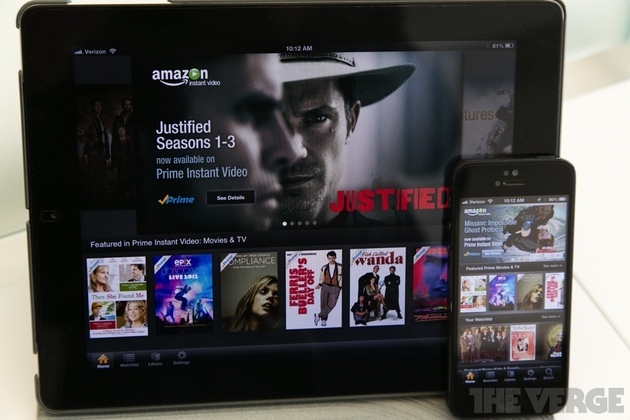
Amazon today announced it's signed a deal with Scripps Networks Interactive that will bring TV content from a slew of channels including the Travel Channel, Food Network, HGTV, DIY Network, and Cooking Channel to Prime Instant Video. It's the first such online-only subscription distribution agreement anyone has reached with Scripps, representing the latest salvo fired in an escalating licensing battle with Netflix.
Scripps content will be available starting today, with popular shows including Anthony Bourdain: No Reservations, Iron Chef America, Man vs. Food, Cupcake Wars, House Hunters and more. Aside from streaming episodes, Amazon says you'll also be able to purchase "many" programs for permanent storage in the cloud via Instant...
Continue reading…

Amazon today announced it's signed a deal with Scripps Networks Interactive that will bring TV content from a slew of channels including the Travel Channel, Food Network, HGTV, DIY Network, and Cooking Channel to Prime Instant Video. It's the first such online-only subscription distribution agreement anyone has reached with Scripps, representing the latest salvo fired in an escalating licensing battle with Netflix.
Scripps content will be available starting today, with popular shows including Anthony Bourdain: No Reservations, Iron Chef America, Man vs. Food, Cupcake Wars, House Hunters and more. Aside from streaming episodes, Amazon says you'll also be able to purchase "many" programs for permanent storage in the cloud via Instant...
Continue reading…
The Friendster Autopsy: How a Social Network Dies
The Friendster Autopsy: How a Social Network Dies:
Researchers study the rise and fall of the once promising social network.
More



Researchers study the rise and fall of the once promising social network.
More
The Age of Edison: Radical Invention and the Illuminated World
The Age of Edison: Radical Invention and the Illuminated World:
A brief history of giving the people what they wanted, or why the lightbulb was a mere cog in the machinery of total illumination.
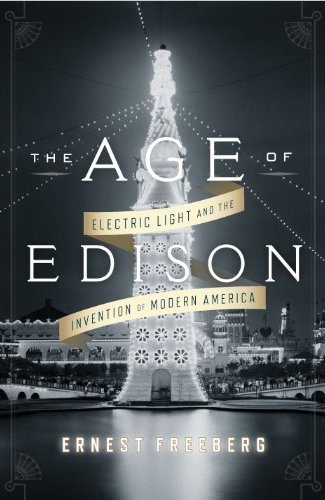 In 1880, a short segment of Broadway from Madison Square to Union Square was transformed into the “Great White Way” when twenty-three arc lights were switched on at nightfall, burning until sunrise the next day.
In 1880, a short segment of Broadway from Madison Square to Union Square was transformed into the “Great White Way” when twenty-three arc lights were switched on at nightfall, burning until sunrise the next day.
The light itself was overwhelming. The New York Times reported:
Light had come to the American city. And it was just awful.
In The Age of Edison: Electric Light and the Invention of Modern America (public library), Ernest Freeberg explains that the invention of electric light was not simply the invention of the light bulb — rather, it was the introduction of an entirely new way of life: the experience of illumination.
Thomas Edison, in fact, wasn’t the first to invent the lightbulb — in one form or another, electric light had been in existence since the turn of the nineteenth century when Sir Humphry Davy — a British scientist who had previously intoxicated himself with nitrous oxide — demonstrated the first arc light to the Royal Society in 1810. The arc light was named for the brilliant white light that appeared when an electrical current jumped the gap between two carbon rods. Davy’s effect was brief but brilliant, and the scientist made no effort to distribute the light on a grand scale.
The arc light was powerful and effective; it became the standard application for inventors who wanted to distribute light to small towns and big cities across the U.S. It could blast away the shadows in Grand Central Station and it could light up an area for miles with a single strobe. San Jose and Austin constricted “moonlight towers,” roughly the size of a modern cell phone tower, to cast a white-hot glow over their city streets and combat crime. For the civic-minded, darkness was the criminal and the arc light was the policeman.
The incandescent light bulb was much more fragile an invention, relying on a glowing filament whose lasting power was unreliable. It was, however, the glow that Edison obsessively sought out. Edison didn’t invent incandescence either, but his goal was to make a bulb that glowed steadily, and that could glow in tandem with others.
Edison the man was an emblem for his entire workshop: hundreds of engineers and patents, a mountain of discarded materials, a thousand promises and false starts, millions of dollars in potential profit and market domination.
Edison and his workshop always invented in full view of the public. He would throw open the doors of his laboratory in Menlo Park, ready to reveal another rung in the ladder of human progress, only to shut himself up again when the newspapers questioned the efficiency of his inventions. The news from Menlo Park, much like the news from Cupertino today — and from Bell Labs in the mid-twentieth century — could affect the stock market on a grand scale.
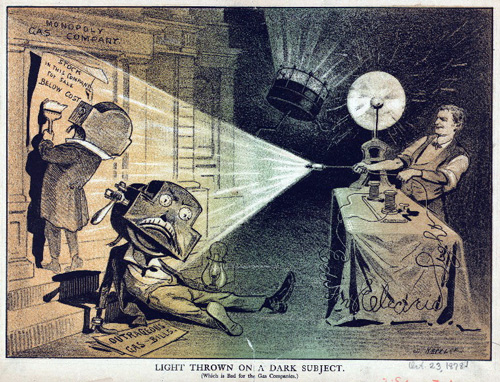
The gas companies had the most to lose from the invention of a successful Edison lighting grid.
Image courtesy the New York Public Library
In late 1879, Edison opened the doors to his laboratory to introduce the prototype of his incandescent light, capable of burning for up to three hundred hours. The bulb itself was not particularly special — hundreds of bulbs with varying filaments had been invented and discarded over the years. What made Edison’s light different, however, was a quality that couldn’t be measured in dollars: it was beautiful.
According to one newspaper, the lightbulb was “a little globe of sunshine” which produced “a bright, beautiful light, like the mellow glow of an Italian sunset.” It was also the first light that had a single sensory experience. For thousands of years, light had been the product of wood, tallow, gas, or coal — where there was smoke, there was light. A newspaper reported of Edison’s bulb:
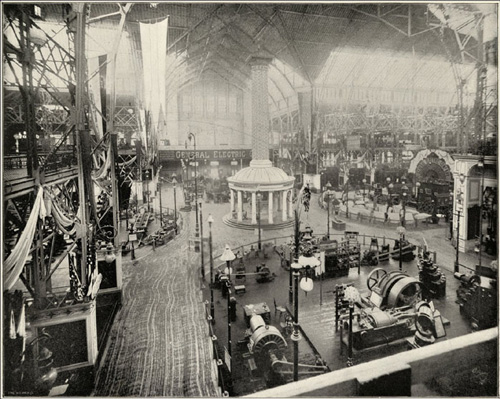
The Edison Electric Tower was a pillar of incandescent light designed to showcase the glow of the Edison bulb. It was a popular feature of the General Electric exhibit at the 1893 Columbian Exposition in Chicago
Image courtesy Field Museum
The great shift from darkness into light during the nineteenth century wasn’t due to the invention of the lightbulb, but the invention of illumination and the experience of light on a grand scale. A well-lit room was not a novelty. A well-lit street, a building sprinkled with light, a lighthouse with a brilliant beam — these were the signposts of an illuminated world. Men and women would begin to stay out later into the night. Constant illumination meant a longer workday — some were driven by need, others simply craved it.
The illuminated world transformed the literary sphere, too. With more people outside during the night, there were more stories to cover, more life to unfold. Newspapers began to publish multiple daily editions, both because they could and because the public hungered for it. The factory worker and the newspaper reporter began to intensify their “night work” and the now-familiar 24-hour workday began to take shape.
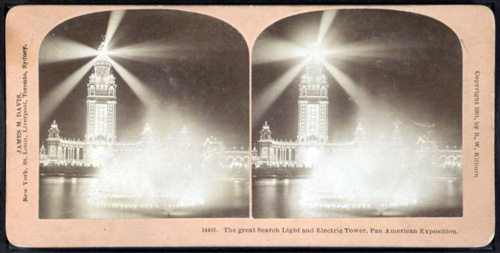
The Great Search Light and Electric Tower at the Pan American Exposition, held in Buffalo in 1901.
Image courtesy the New York Public Library
The Age of Edison is the story of invention and experience, in which the race to light America was not for the brightest light, but the best, and the smartest. In the end, Edison’s incandescent bulb prevailed — not simply because it was the most beautiful light, but also because it was the savviest.
 Michelle Legro is an associate editor at Lapham’s Quarterly. You can find her on Twitter.
Michelle Legro is an associate editor at Lapham’s Quarterly. You can find her on Twitter.
 Brain Pickings has a free weekly newsletter. It comes out on Sundays and offers the week’s best articles. Here’s what to expect. Like? Sign up. Brain Pickings takes 450+ hours a month to curate and edit across the different platforms, and remains banner-free. If it brings you any joy and inspiration, please consider a modest donation – it lets me know I'm doing something right.
Brain Pickings has a free weekly newsletter. It comes out on Sundays and offers the week’s best articles. Here’s what to expect. Like? Sign up. Brain Pickings takes 450+ hours a month to curate and edit across the different platforms, and remains banner-free. If it brings you any joy and inspiration, please consider a modest donation – it lets me know I'm doing something right.



A brief history of giving the people what they wanted, or why the lightbulb was a mere cog in the machinery of total illumination.
 In 1880, a short segment of Broadway from Madison Square to Union Square was transformed into the “Great White Way” when twenty-three arc lights were switched on at nightfall, burning until sunrise the next day.
In 1880, a short segment of Broadway from Madison Square to Union Square was transformed into the “Great White Way” when twenty-three arc lights were switched on at nightfall, burning until sunrise the next day. The light itself was overwhelming. The New York Times reported:
The great white outlines of the marble stores, the mess of wire overhead, the throng of moving vehicles, were all brought out with an accuracy and exactness that left little to be desired.Women shielded themselves from the light using umbrellas. One person described the scene in horror:
People looked ghastly — like so many ghosts flitting about.The harsh brightness of the arc lights required that they be hoisted between 20 and 50 feet in the air, throwing the city into dramatic light and shadow. People appeared gaunt and washed out, and the light exposed every skin imperfection. The experience of the arc lamp was like standing under a watchtower, and the street now had one on every corner. New York had been transformed into a prison, not a playground.
Light had come to the American city. And it was just awful.
In The Age of Edison: Electric Light and the Invention of Modern America (public library), Ernest Freeberg explains that the invention of electric light was not simply the invention of the light bulb — rather, it was the introduction of an entirely new way of life: the experience of illumination.
Thomas Edison, in fact, wasn’t the first to invent the lightbulb — in one form or another, electric light had been in existence since the turn of the nineteenth century when Sir Humphry Davy — a British scientist who had previously intoxicated himself with nitrous oxide — demonstrated the first arc light to the Royal Society in 1810. The arc light was named for the brilliant white light that appeared when an electrical current jumped the gap between two carbon rods. Davy’s effect was brief but brilliant, and the scientist made no effort to distribute the light on a grand scale.
The arc light was powerful and effective; it became the standard application for inventors who wanted to distribute light to small towns and big cities across the U.S. It could blast away the shadows in Grand Central Station and it could light up an area for miles with a single strobe. San Jose and Austin constricted “moonlight towers,” roughly the size of a modern cell phone tower, to cast a white-hot glow over their city streets and combat crime. For the civic-minded, darkness was the criminal and the arc light was the policeman.
The incandescent light bulb was much more fragile an invention, relying on a glowing filament whose lasting power was unreliable. It was, however, the glow that Edison obsessively sought out. Edison didn’t invent incandescence either, but his goal was to make a bulb that glowed steadily, and that could glow in tandem with others.
Edison the man was an emblem for his entire workshop: hundreds of engineers and patents, a mountain of discarded materials, a thousand promises and false starts, millions of dollars in potential profit and market domination.
Edison and his workshop always invented in full view of the public. He would throw open the doors of his laboratory in Menlo Park, ready to reveal another rung in the ladder of human progress, only to shut himself up again when the newspapers questioned the efficiency of his inventions. The news from Menlo Park, much like the news from Cupertino today — and from Bell Labs in the mid-twentieth century — could affect the stock market on a grand scale.

The gas companies had the most to lose from the invention of a successful Edison lighting grid.
Image courtesy the New York Public Library
According to one newspaper, the lightbulb was “a little globe of sunshine” which produced “a bright, beautiful light, like the mellow glow of an Italian sunset.” It was also the first light that had a single sensory experience. For thousands of years, light had been the product of wood, tallow, gas, or coal — where there was smoke, there was light. A newspaper reported of Edison’s bulb:
There is no flicker… There is nothing between it and darkness. It consumes no air and, of course, does not vitiate any. It has no odor or color.Cities and towns did not simply crave light — the arc light was the brightest and boldest light a person could experience — they craved the right light. Edison’s incandescent bulb was not the brightest, but it had the glow that the public desired. Edison devised a system of lighting, a string of incandescent bulbs that ran on parallel circuits — ensuring that one outage wouldn’t collapse the system — driven by an enormous dynamo that allowed an even brightness across a vast field. Edison didn’t simply envision a bulb, be envisioned a grid, and he hooked his lighting into the tangle of telegraph wires, phone lines, and police alarms that already ran through the city.

The Edison Electric Tower was a pillar of incandescent light designed to showcase the glow of the Edison bulb. It was a popular feature of the General Electric exhibit at the 1893 Columbian Exposition in Chicago
Image courtesy Field Museum
The illuminated world transformed the literary sphere, too. With more people outside during the night, there were more stories to cover, more life to unfold. Newspapers began to publish multiple daily editions, both because they could and because the public hungered for it. The factory worker and the newspaper reporter began to intensify their “night work” and the now-familiar 24-hour workday began to take shape.

The Great Search Light and Electric Tower at the Pan American Exposition, held in Buffalo in 1901.
Image courtesy the New York Public Library
 Michelle Legro is an associate editor at Lapham’s Quarterly. You can find her on Twitter.
Michelle Legro is an associate editor at Lapham’s Quarterly. You can find her on Twitter.Donating = Loving
Bringing you (ad-free) Brain Pickings takes hundreds of hours each month. If you find any joy and stimulation here, please consider becoming a Supporting Member with a recurring monthly donation of your choosing, between a cup of tea and a good dinner:


Bringing you (ad-free) Brain Pickings takes hundreds of hours each month. If you find any joy and stimulation here, please consider becoming a Supporting Member with a recurring monthly donation of your choosing, between a cup of tea and a good dinner:
You can also become a one-time patron with a single donation in any amount:
 Brain Pickings has a free weekly newsletter. It comes out on Sundays and offers the week’s best articles. Here’s what to expect. Like? Sign up.
Brain Pickings has a free weekly newsletter. It comes out on Sundays and offers the week’s best articles. Here’s what to expect. Like? Sign up. 
Subscribe to:
Comments (Atom)





